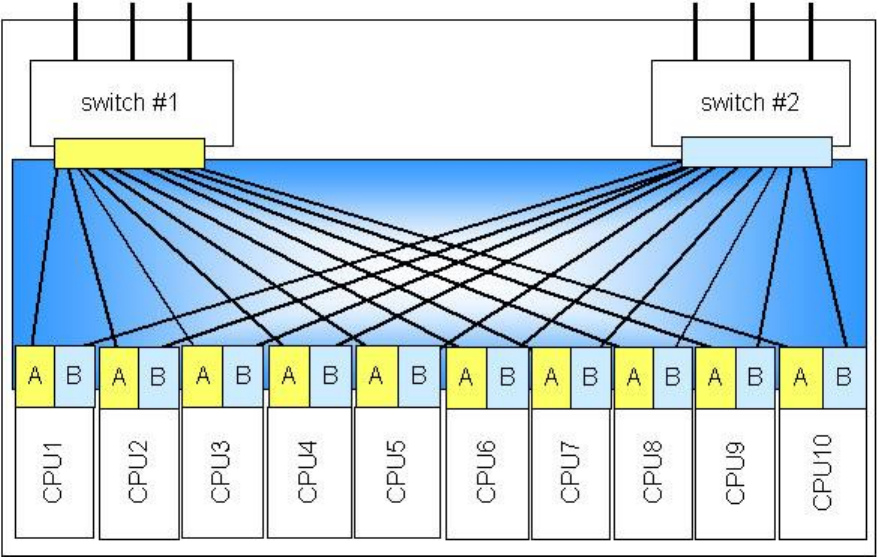
White Paper Issue: October 2006 Integration of BX600 SB9 Switches in Cisco Networks Page 24 / 47
2.5 Access Port and NIC Configuration
2.5.1 Introduction
In a typical setup, ports for server access are not configured as VLAN trunks but as normal access ports. Since the SB9
configuration differs slightly from the Cisco configuration, we show how to set up an access port of the SB9.
Figure 10 : BX600 port mapping
To ensure high availability of the servers, most BX600 racks will be equipped with two SB9 switches. In this case each blade
has one NIC port connected to the first SB9 and another port connected to the second SB9 switch (see also Figure 10). In order
to provide a fast failover between these NIC ports, both switch ports must be configured identically and the NIC failover must be
configured in the right way.
2.5.2 Recommended solution
The failover mechanism depends on the NIC vendor. At the moment there are two different type of NICs used for CPU blades:
Intel and Broadcom.
For CPUs equipped with Broadcom NICs running Microsoft Windows there are in general two failover mechanisms available:
• Smart Load Balance and Failover (with and without Auto-Fallback)
• Link Aggregation (802.3ad or FEC/GEC)
Since the two ports of the NIC are terminated on two different switches, link aggregation cannot be used for failover. SLB
depends on the link state of the NIC. When the CPU comes up, the primary adapter will become active. If the corresponding
switch fails and the link state goes down, the secondary adapter takes over. If the link state of the primary adapter comes back
and “Auto-Fallback” is enabled, the primary adapter will become active again.
Since the link state of the primary adapter may come up before the uplinks of the corresponding switches are forwarding, this
may lead to an unnecessary network failure. We recommend using SLB without Auto-Fallback for CPU with Broadcom NICs
running Microsoft Windows.
Almost the same applies to CPUs equipped with Intel NICs running under Microsoft Windows. They provide some additional
failover mechanisms:
• Adapter Fault Tolerance (AFT)
• Adaptive Load Balancing (ALB)
• Link Aggregation (Static or 802.3ad)
• Switch Fault Tolerance (SFT)
Link aggregation cannot also be used with Intel adapters in a BX600 rack. AFT and ALB both define a primary adapter and will
fallback automatically when the link comes back after a switch failure. This would lead to the same problem as Auto-Fallback on
Broadcom NICs.
If you configure SFT with no adapter priorities there will be no automatic fallback. This is the recommended setup for CPU
Blades equipped with Intel NICs running Microsoft Windows.
Failover times of under one second can be achieved by following our recommendations.


















